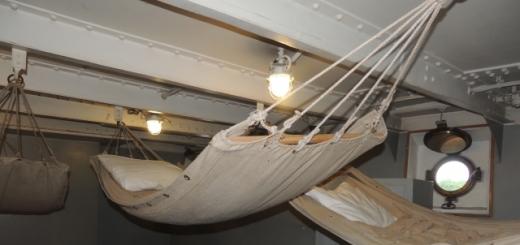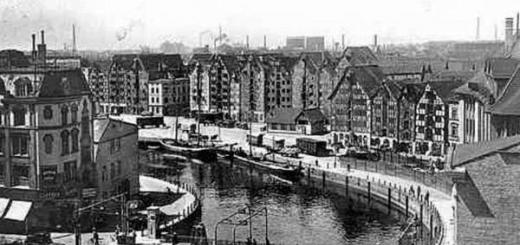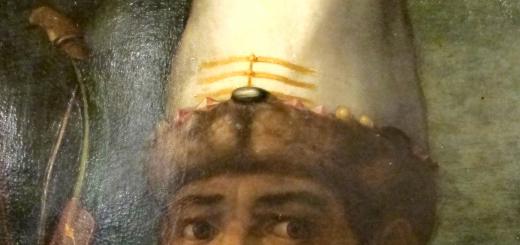In contact with
Station of the Koltsevaya line of the Moscow metro.
Story
The first metro station near Leningradsky and railway stations was the Komsomolskaya station of the Kirovsko-Frunzenskaya (Sokolnicheskaya) line, opened in 1935 as part of the first stage of the metro.
The original plans of the Moscow Metro did not include the Circle Line. Instead, it was planned to build "diametrical" lines with transfers in the city center. The first project of the Circle Line appeared in 1934. Then it was planned to build this line under the Garden Ring with 17 stations.
USSR Post, S. Pomansky, CC BY-SA 3.0According to the 1938 project, it was planned to build a line much further from the center than was built later. Planned stations were Usachyovskaya, Kaluzhskaya Zastava, Serpukhovskaya Zastava, Stalin Plant, Ostapovo, Hammer and Sickle Plant, Lefortovo, Spartakovskaya, Krasnoselskaya, Rzhevsky Station, Savelovsky Station, Dynamo, Krasnopresnenskaya Zastava, Kyiv.
In 1941, the design of the Circle Line was changed. Now it was planned to be built closer to the center. In 1943, a decision was made to urgently build the Koltsevaya Line along the current route in order to unload the interchange hub "Okhotny Ryad" - "Sverdlov Square" - "Revolution Square".
The circle line became the fourth stage of construction. In 1947, it was planned to commission the line in four sections: "Central Park of Culture and Leisure" - "Kurskaya", "Kurskaya" - "Komsomolskaya", "Komsomolskaya" - "Belorusskaya" (then it was merged with the second section) and "Belorusskaya" - " Central Park of Culture and Leisure.
The first section, Park Kultury - Kurskaya, was opened on January 1, 1950, the second, Kurskaya - Belorusskaya, on January 30, 1952, and the third, Belorusskaya - Park Kultury, closing the line in ring, - March 14, 1954. It was originally planned to build three vestibules of Komsomolskaya, but only one was built. The transition to the Sokolnicheskaya line was opened along with the station.
Architecture and decoration
Lobby
At the northern end of the station there is a staircase leading to a small domed anteroom. In the dome of the arch, decorated with golden smalt, there is a red five-pointed star with golden rays diverging in all directions. This mosaic decoration appeared no earlier than the 1960s. A massive multi-track chandelier is suspended in the center of the entrance hall.
A long and wide corridor leads from the entrance hall to the escalator tunnel. The escalator tunnel, in turn, leads to the ground vestibule, common to both stations of the hub. This vestibule has an octagonal volume under a large dome.
The dome is decorated with stucco and figured bas-reliefs of trumpeters (author G. I. Motovilov). There are two hanging chandeliers in the form of church chandeliers along the axis of the dome, and large floor lamps in all corners. The walls are lined with light beige marble.
The vestibule combines the top of two escalator tunnels of two stations, the entrance from Komsomolskaya Square, the exit to the square between Yaroslavsky and Leningradsky stations and the entrance from the underground lobby with corridors from both of these stations.
This entire architectural ensemble is located inside the street pavilion. It is a large two-story cross-shaped building with two six-column porticos from the side of Komsomolskaya Square and with access to the platforms of Leningradsky and Yaroslavsky railway stations from the opposite side.
From it you can also go to the Kalanchevskaya platform of the Kursk direction of the Moscow Railway. Since November 2007, the entrance through the front doors of the pavilion has been closed and is carried out through an underground passage under Komsomolskaya Square. The inner vault of the vestibule protrudes outside with a large gray dome. This dome is crowned with a tall spire with a five-pointed star. The star depicts a sickle and a hammer.
station halls
The design used a prefabricated cast-iron lining, a monolithic slab was used as a tray. The length of the landing hall is 190 meters, the width of the central nave is 11 m (instead of 8 m, typical for stations of this design), the height of the hall is 9 m (instead of the characteristic 5.5 m).
According to the last two indicators, this station is the largest of the columned stations of the Moscow metro. In 1952, together with P. D. Korin, the architect A. V. Shchusev was posthumously awarded the Stalin Prize of the second degree for 1951 for the architecture of the station.
 Katlenburg-Lindau, German , CC BY 2.0
Katlenburg-Lindau, German , CC BY 2.0 Architecturally, the Komsomolskaya station is the apotheosis of the Stalinist Empire style, distinguished by its grandiosity, pomposity, a combination of elements of classicism, Empire style and Moscow baroque. One of the authors of the project, A. Yu. Zabolotnaya, wrote that the station was conceived as one of the busiest transport hubs in the city and as a kind of gateway to Moscow. These "gates" were supposed to form the first impressions of Moscow.
There are 68 octagonal columns at the station (the step is 5.6 meters). The arcades, which include two rows of columns, are connected by graceful arches. They hold common entablature with cornices, stretching along the entire length of the station. The foundations of the vaults of the central and side halls rest on the cornices. The vault of the central hall is one and a half times higher than the side ones.
The triumph of the Soviet people in the Great Patriotic War is the leading theme of the architecture of the station's interiors. The grandeur of this patriotic theme is reflected in the grandiose scope of the spatial construction of the underground hall, in the richness of the decorative decoration, in the brightness of its color and lighting scheme. The ceiling of the station is decorated with eight mosaic panels of smalt and precious stones. They are a visualization of the speech of I. V. Stalin, delivered at the parade on November 7, 1941:
“The war you are waging is a war of liberation, a just war. Let the courageous image of our great ancestors - Alexander Nevsky, Dimitri Donskoy, Kuzma Minin, Dimitri Pozharsky, Alexander Suvorov, Mikhail Kutuzov inspire you in this war! May the victorious banner of the great Lenin overshadow you!..”
I. V. Stalin
The vault is decorated with white stucco ornamentation. At the heels of the vault there was a row of gilded bas-relief cartouches on a crimson-red background, made according to the models of the sculptors S. V. Kazakov and A. M. Sergeev on the theme “Russian weapons”, later replaced by mosaics. At the same time, the dome of the entrance hall in front of the escalator corridor was also laid out with mosaics. This statement by Stalin was carved on a marble plaque installed at the entrance to the platform hall.
 Zac allan, Public Domain
Zac allan, Public Domain Six mosaics depict Alexander Nevsky, Dmitry Donskoy, Kuzma Minin and Dmitry Pozharsky, Alexander Suvorov, Mikhail Kutuzov, Soviet soldiers and officers near the walls of the Reichstag. Their author is the artist P. D. Korin. Two more panels depicting I.V. Stalin (“Victory Parade” and “Presenting the Guards Banner”) were replaced after Stalin’s personality cult was debunked in 1963. Prior to this, these panels were repeatedly "corrected" with the removal of disgraced leaders.
Initially, the panel “Presenting the Guards Banner” depicted Stalin handing over the banner to a soldier, and behind him - V. M. Molotov, L. P. Beria, L. M. Kaganovich. The panel "Victory Parade" depicted the same people on the podium of the Mausoleum, at the foot of which were abandoned fascist banners. New panels depict V. I. Lenin's speech to the Red Guards and the Motherland against the backdrop of the Kremlin's Spasskaya Tower. Korin himself remade the panel.
The yellow ceiling is also decorated with mosaic inserts and stucco. The hall is illuminated by massive multi-track chandeliers hanging between the panels; the platforms are illuminated by smaller chandeliers.
The columns are decorated with marble capitals and finished with light Uzbek marble "gazgan", just like the walls of the station. The floor is paved with raspberry-red Kuznechninsky (Kaarlakhtinsky) granite. The track platforms are finished with red Kapustinsky and pink-red Klyosovsky granite. A bust of V. I. Lenin is installed in the dead end of the hall.
Transition to the Sokolnicheskaya line
The transition starts in the middle of the hall. There are two pairs of escalators leading down to a spacious hall lit by a small chandelier and wall sconces. The passenger then enters the escalator hall through a long, curved corridor below the station.
On the wall is a Florentine mosaic based on sketches by P. D. Korin depicting the Order of Victory against the background of red banners and weapons, which are framed by a laurel wreath entwined with a St. George ribbon. A large four-lane escalator leads from the hall. At the top there is an underground circular columned hall with access to the southern end of the Komsomolskaya Sokolnicheskaya line. On the other side of the circular columned hall is the exit to the Kazansky railway station.
Station in numbers
- Station code - 070.
- Picket PK181+74.6.
- The laying depth is 37 meters.
- According to 1999 data, the daily passenger traffic through the lobbies was 161,440 people, the transfer passenger traffic to the Komsomolskaya station of the Sokolnicheskaya line was 104,300 people. According to a statistical study in 2002, the passenger traffic of the station was: at the entrance - 119,000 people, at the exit - 110,900 people.
- The opening time of the station for passengers is 5 hours 20 minutes (exit to Kazansky railway station) and 5 hours 30 minutes (exit to Yaroslavsky and Leningradsky stations), closing time - at 1 am.
- Time table for the first train to pass through the station:
 Mikhail (Vokabre) Shcherbakov , CC BY-SA 2.0
Mikhail (Vokabre) Shcherbakov , CC BY-SA 2.0
Photo gallery













Useful information
Komsomolskaya
It is named after Komsomolskaya Square, under which it is located.
In 1991, a project was proposed to change the name of the station to Kalanchevskaya, and in 1992 to Three Stations, but both projects were not implemented.
Opening hours
- Opening: exit to Kazansky railway station - 5:20, exit to Yaroslavsky and Leningradsky railway stations - 5:30
- Closing: 1:00; 18:15-18:50 (Monday-Thursday, entry from Yaroslavsky and Leningradsky railway stations); 17:15-18:50 (Friday, entrance from the same place)
Location
Under Komsomolskaya Square between Prospekt Mira and Kurskaya stations. It is located on the territory of the Krasnoselsky district of the Central Administrative District of Moscow.
Out to the streets:
Komsomolskaya square, Leningradsky railway station, Yaroslavsky railway station, Kazansky railway station
Type of
Station columned three-vaulted deep.
Architects
A. V. Shchusev, V. D. Kokorin, A. Yu. Zabolotnaya, O. A. Velikoretsky
A. F. Fokina
Station in culture
"Komsomolskaya" is mentioned in the book "Old Man Hottabych" by L.I. Lagin, published in 1955. In the 1938 edition, instead of the then non-existent "Komsomolskaya", the station "Kyiv railway station" is mentioned.
“They entered the halls of the third palace, which shone with such splendor that Volka gasped:
- Why, it's a spitting image of the subway! Well, right at the Komsomolskaya Koltsevaya station!”
The Komsomolskaya station is mentioned in Dmitry Glukhovsky's post-apocalyptic novel Metro 2033. According to the book, the station was part of the Commonwealth of Stations of the Circle Line, more commonly referred to as Hansa. The inhabitants of this station, like those of the entire Commonwealth, live off trade and the collection of duties from merchants.
Railway transport
From the northern vestibule - exit to the Leningrad and Yaroslavl stations. The Oktyabrskaya railway starts from the Leningradsky railway station, from Yaroslavsky - the Yaroslavl direction of the Moscow railway. Also nearby is the Kalanchevskaya station of the Kursk direction of the Moscow Railway.
Through the passages in the center of the hall - exit to the Kazan railway station. The Kazan direction of the Moscow railway begins from the Kazansky railway station.
Ground public transport
Komsomolskaya station has access to several public transport stops:
- Stop "Komsomolskaya sq. - The Moskovsky store is located on Komsomolskaya Square. Trams number 7, 13, 37, 50 stop there.
- Stop "Komsomolskaya sq. - The Moskovsky store is located on Komsomolskaya Square. Buses No. 40 and 122 and trolleybuses No. 14, 41 stop there.
- The stop "Metro Komsomolskaya" is located on Komsomolskaya Square. Bus number A stops there.
- Stop "Factory" Bolshevichka "- Komsomolskaya Square." located on Kalanchevskaya street. Trolleybuses No. 22 and 88 stop there.
Unexpectedly, photos of Moscow metro stations aroused great interest in the blog. However, why is it unexpected ... Not all of those who came across my blog on the Internet were in Moscow. And the fame of the beauty of the Moscow metro spread throughout the world. I won’t take pictures of all the Moscow metro stations, but I’ll show you a few more that I like.
Very beautiful, simply luxurious Komsomolskaya station of the Moscow metro ring line.
The station opened on January 30, 1952. This is the most spacious columned station of the Moscow Metro. The central hall is 190 meters long and 11 meters wide. ceiling height 9 meters.

The Komsomolskaya ring station is just a real palace, the design of which combined several styles at once. Today, this mixture of styles is called the Stalinist Empire style. The project of the station was developed by a group of architects, the idea of decor was based on the speech of I.V. Stalin at the parade on November 7, 1941: “The war you are waging is a war of liberation, a just war. Let the courageous image of our great ancestors - Alexander Nevsky, Dmitry Donskoy, Kuzma Minin, Dmitry Pozharsky, Alexander Suvorov, Mikhail Kutuzov inspire you in this war! May the victorious banner of the great Lenin overshadow you!

68 octagonal marble columns are installed with a step of 5.6 meters. The ceiling of the station is decorated with eight mosaic panels made of smalt and valuable ornamental stones based on sketches by the artist P.D. Korin. The panels are dedicated to the struggle of the Russian people for independence. Also, the ceiling is decorated with images of various military attributes and luxurious chandeliers. All this is generously framed with stucco.

As conceived by the architects, Komsomolskaya station, where guests of the capital arrive at three railway stations, should make an indelible first impression of Moscow. Really makes an impression!

From the ring line to Sokolnicheskaya there is a passage, which is also worthy of being photographed.

On the wall of the escalator hall there is a mosaic depicting the Order of Victory, also made according to the sketch of the artist P.D. Korin.

On the four-lane escalator I go up to the Komsomolskaya-radial station. This station is also interestingly decorated in its own way, but there are always so many people here that no one pays attention to all this ...

Soon we are promised that the largest interchange hub will appear in Moscow City, not only in Moscow, but possibly in the country. In the meantime, the largest interchange hub is here, on Komsomolskaya Square, the area of three stations. Here, in addition to the actual three loaded stations with high passenger traffic, there are also two metro stations - Komsomolskaya Sokolnicheskaya and Koltsevaya lines. We will go to the last one.
TTX of the station. The empty Komsomolskaya in the photo is something from the realm of fantasy.
The author of the station project was none other than one of the most titled architects - A.V. Shchusev. It was the last project of the architect, the station was completed after his death. For this project, he was posthumously awarded the Stalin Prize of the second degree.
Builders at the station. Very cool helmets.
But they collect and prepare the chandeliers of the central hall.
After the debunking of the cult of personality, all the images of Stalin (and there were many) in the subway were edited. Such a metamorphosis has undergone a panel on the vault of Komsomolskaya.
Unique photo. Sort out the mosaic.
And at some point, an analogue of the modern INFOSOS appeared on Komsomolskaya, moreover, here it is with a TV. Actually, what a miracle of technology. Judging by the fact that such devices did not spread, I will assume that the experiment was considered a failure. Actually, most likely the same fate should befall modern INFOSOS.
Beautiful colorized BW photo. It can be seen here that initially there was painted stucco molding above the row of columns. Now there are mosaics.
What a beauty. What an interesting audience. Here is an old old school train. The inscription above the cabin "RING", without any route numbers.
The rally dedicated to the opening of the station. How many people!
Photo from the RIANovosti website. Khrushchev at a rally, about the launch of a new section of the Circle Line, 1952. The portrait of Stalin with sadness and fatigue looks at the smiling Khrushchev. Soon the leader's portraits will be filmed from everywhere.
And here is a card by Henri Cartier-Bresson taken at Komsomolskaya.
1. So there is only one ground pavilion at the station. This is a combined pavilion of both Komsomolsk. The building is pompous, with a dome and a spire with a red star at the top. Absolutely appropriate luxury, against the backdrop of the buildings of the Leningrad and Yaroslavl stations.
2. The ground vestibule of Komsomolskaya is what visitors see first of all. I think he makes the right impression. Still the capital. By the way, recently the area in front of the stations has been substantially cleaned from the dirt of all marginal elements. And now you can even walk here without being disgusted.
3. Now there is only an exit from the side of the main facade. But you can safely walk here without the noise and crowds.
4. On both sides of the cash hall, the cashier itself. What beautiful lamps
5. Finishing cash register windows.
6. Decorative panels underneath.
7. Hermetic seal and passage to the escalator hall.
8. Escalator hall. Round with a domed ceiling. Escalators leave from here to Komsomolskaya Koltsevaya and Sokolnicheskaya lines. There is stucco molding on the vaults, and it seems that it was originally planned to supplement the stucco molding with mosaics. Empty "frames" look strange.
9. And there are amazing lamps in this hall. What a beauty.
10. It's always crowded here. In general, it is difficult for me to imagine that Komsomolskaya would be deserted. People from train stations, people to the station, an endless loop.
11. There clearly had to be something here, some kind of mosaic.
12. And what luxurious chandeliers.
13. Transition from the escalators towards the station hall. Illumination in the upper part behind the eaves. Fashionable architectural solution of the time.
14. Tuto is also stucco. Interestingly, this is the "mesh" in the lower part, behind it are the speakers or is it for ventilation?
15. From the transition we get into the entrance hall. It serves as a kind of turn, as the transition approaches the platform part at a right angle.
16. The dome, yes there is also a dome, is decorated with mosaics and stucco. Yes, also a chandelier. Everything you could think of. What a pity that they stuffed all kinds of advertising here and installed vending machines for the press.
17. Raise your head up. Yes, not every palace interior can boast of such decoration.
18. The vaults are painted yellow. Unusual. I just can’t remember right off the bat another Moscow metro station, where the vaults are painted in any color other than white.
19. Naturally stucco. In general, you pay attention to such things if you are not in a hurry. For many, such a beautiful station is just a transfer to an electric train or train, some do not notice this beauty at all. But the station was conceived as the largest, most impressive on the Ring. It was supposed to be the GATE to the city!
20. What is interesting. The mosaic appeared here at the same time as the mosaic above the columns in the central hall. I wonder if the station was closed at the time of reconstruction and installation of mosaics?
21. The station itself is interesting in that the arch of the central hall is truly huge, it is 1.5 times higher than the arches of the side halls. This height made it possible to hang huge chandeliers, as if from a palace or, for example, from some kind of temple.
22. The ceiling is decorated with huge mosaics.
23. All of them, to one degree or another, glorify the glory of Russian weapons. Here is a panel with Alexander Nevsky.
24. But "Red Army men with a red banner" looks like the ruins of the Reichstag.
25. Even a wide-angle does not allow you to embrace the immensity.
26. Once again, lift your head up.
27. In the middle of the hall, a transition to the Sokolnicheskaya line. The railings are richly decorated.
28. In a deaf end there is such a bust of Lenin. And no one had the idea to dismantle it, which is good. Above Lenin is a vault with a mosaic in the center of which is the Soviet coat of arms.
29. Some numbers. There are 68 columns at the station, the platform is 190 meters long. The height of the central vault is 9 m.
30.
31.
32.
33. View of the central hall.
34.
P.S.
All archive photos found on a wonderful site
Metro station "Komsomolskaya" is located between the stations "Prospekt Mira" and "Kurskaya" of the ring line of the Moscow metro, in the Krasnoselsky district of the capital.
Station history
Name history
The name of the station is associated with Komsomolskaya Square, which is popularly called the "square of three stations." The square itself was named "Komsomolskaya" in honor of the 15th anniversary of the Komsomol in 1933.
Station Description
The station's theme is "The Struggle of the Russian People for Freedom". All the panels located on the vault of the station are dedicated to this theme. It depicts prominent political and military figures, including: Kutuzov, Suvorov, Minin, Pozharsky, Dmitry Donskoy and Alexander Nevsky. There are panels depicting Soviet soldiers and officers under the walls of the Reichstag. Until 1963, there were two more images at the station - "Presenting the Guards Banner" and "Victory Parade". But after the personality cult of Stalin, which was depicted on these panels, was debunked, they were replaced with images of the Motherland against the backdrop of the Kremlin's Spasskaya Tower and Lenin's speech to the Red Guards. The design of the station is complemented by mosaic inserts and bas-reliefs depicting weapons.
At the end of the hall, located next to the large escalator, there is a mosaic of the Order of Victory against the background of red banners. At the opposite end of the station there is a bust of V. I. Lenin. Bas-reliefs by G. I. Motovilov adorn the northern vestibule of the station.
The station has 68 octagonal columns, the pitch of which is 5.6 meters. The columns are decorated with capitals and lined with light marble. The floor is paved with pink granite. Hanging carob chandeliers illuminate the station hall. The ceiling of the station is yellow.
Specifications
Komsomolskaya is a three-span deep-laying pylon station located at a depth of 37 meters. During the construction of the station, prefabricated cast-iron structures were used. The length of the station is 190 meters, the width of the platform is 10 meters.
Vestibules and transfers
Due to transfers, the station has the largest passenger flow in the capital - about 262 thousand people a day.
The station has several vestibules facing Yaroslavsky, Leningradsky and Kazansky stations. The northern and southern vestibules of both stations are combined and serve as a transition to neighboring lines. The southern vestibule is built into the Kazansky railway station and has access to Kalanchevskaya and Komsomolskaya squares. The northern vestibule overlooks the Leningradsky and Yaroslavsky railway stations and the Kalanchevskaya platform of the Kursk direction.
In the center of the hall there are escalators and stairs leading to the Komsomolskaya station of the Sokolnicheskaya line.
Ground infrastructure
Since the station is located in close proximity to the three major stations of the capital, the ground infrastructure is very well developed here. Here you will find everything from grocery stores and restaurants to nightclubs and museums.
Useful facts
The north lobby is open from 5:20 am to 1:00 am, the south lobby is open from 5:30 am to 1:00 am.
At the international exhibition in Brussels, held in 1958, the project of the station won the Grand Prix.
The appearance of the Museum of the Decembrists is associated with a unique case: the ruined city estate on Staraya Basmannaya was saved by a potential heir. Although Russian history was not the most successful for the ancestors of Muravyov-Apostol, the Swiss businessman and Russian nobleman considers the estate to be his family nest. Christopher Muraviev-Apostol restored it with his own money and established a museum in it. For this unprecedented step, he received - the first in Moscow - the right to pay a symbolic price per year for renting premises: a ruble per square meter. The estate is a house in the style of Moscow classicism. Ground floor 298 sq. m with vaulted ceilings and wooden floors reproduces the interior of the XVIII century. There is a lecture hall here. A solid staircase leads to the second - front - floor, where there is an entrance hall, a pantry, an office, a bedroom, two living rooms, a ballroom and a spacious hall. It is here that exhibitions and other cultural events are held: exhibits of the Christie's auction house were shown here; this space has become one of the sites of the Photobiennale. There is no permanent exhibition in the museum yet. However, you can visit the estate during exhibitions, or by pre-registering for an excursion.










